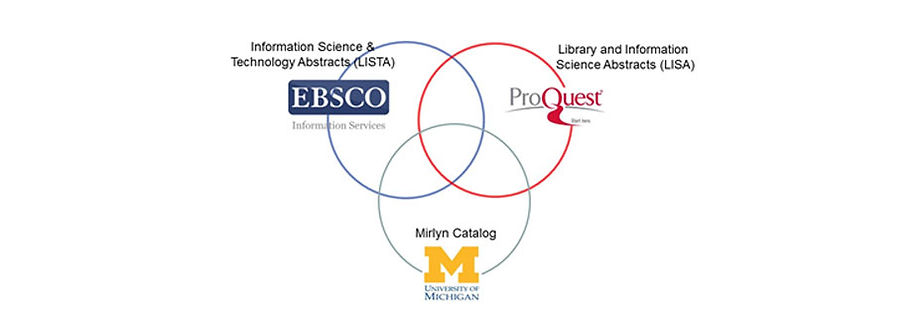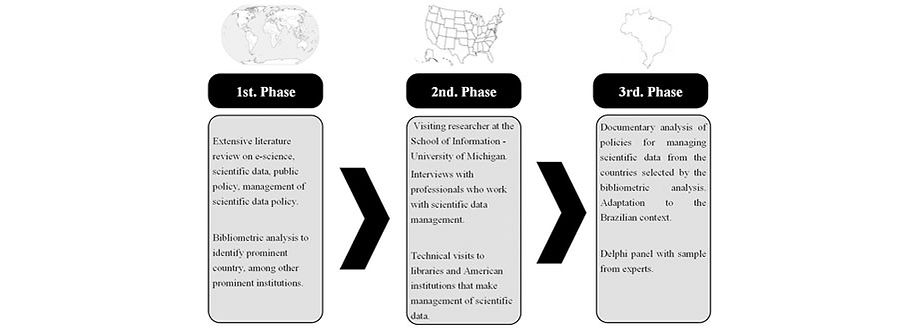
by Maíra Murrieta Costa
A bibliographic search, carried out within national and international databases, reveals a paucity of studies that address the contributions of librarianship and information science for e-science. Therefore, the research, as well as its objectives, will be presented as exploratory, due to the consensus in the literature that when little accumulated and systematized knowledge exists on the subject of research, the research, as well as its objectives, should be exploratory (GIL, 2006; MATIAS-PEREIRA, 2007).
The exploratory nature of the study can be substantiated by the small quantity of articles published both in Brazil as well as internationally, as demonstrated by Table 1.
TABLE 1 – PRELIMINARY SURVEY ON E-SCIENCE AND LIBRARIANSHIP
Source: the author. Data collected on 06/19/2012
It is worth highlighting that the types of research are not mutually exclusive. The study can be exploratory in essence, but contain predictive elements (SAMPIERI, COLLADO, LÚCIO, 2006).
It is understood that the complexity of the subject to be studied permits three distinct, but complementary, research stages to be carried out.
The first phase of the research comprises a broad literature review of international literature on aspects related to e-science and information policy and management of scientific data in developed countries. This step will be developed in the United States by the visiting researchers at the School of Information, University of Michigan.
Bibliographic Research about data curation phenomenon in information science:
• Bibliographic research about big-data, big science, little science, data deluge, information policies to manage big data and e-science, and conceptual aspects of information science to organize this collection of data.
• Bibliographic research about data curation, management and preservation of e-science information to establish the state of the art of the area, understand foundational principles, requirements, and techniques for data curation.
• Bibliographic research about basic skills for the information professional who will organize the collection originated from e-science.
During the first phase of the research, bibliographic metadata records that deal on the subject e-science will be collected. The collection of these metadata will be made in the database Library and Information Science Abstracts (LISA), Information Science & Technology Abstracts (LISTA) as well as the online Public Access Catalog - University of Michigan Library.
Figure 1 - Bibliographic Research (bibliographic metadata records)
Source: the author.
The metadata collection of these articles will enable the construction of a scientometric panel of e-science subjects to demonstrate which American institutions have dealt with the issue, which researchers / professors have worked in the area, and which authors have published on the subject.
The results of scientometric analysis will create, a sample to start the second stage and conduct interviews with experts and visit libraries and other American institutions. In addition, structured interviews will be carried out with researchers who produce e-science data, and, if available, internal documents will be analyzed (from Americans libraries or other institutions) to guide e-science data treatment.
Interviews Objectives:
• Interviews with researchers from the University of Michigan - Ann Arbor to identify the direction of research on data curation and data deluge in information science.
• Interview with librarians at the University of Michigan - Ann Arbor in order to identify how they are preparing themselves for this new challenge.
Technical Visit Objectives:
a) Library of Michigan of University – Ann Arbor.
b) Inter University Consortium for Political and Social Research – University of Michigan
The third stage will begin in the second half of 2015. This final phase will identify strategic stakeholders in managing scientific data in Brazil and will seek to develop an outline of guidelines for the management of such data in the country. Thus, this step takes a predictive character, so will use the Delphi technique to collect data on a sample of experts. The Delphi technique will provide a guide to future policy development.
The consulted literature reveals that the method is a form of qualitative research, which seeks to discover the consensus of the opinion of a group of specialists with regards to a determined future event, through interactive questioning rounds. The pillars of the method are: anonymity, use of specialists, applying interactive rounds, and controlled feedback (BAPTISTA, CUNHA, 2007; GIOVINAZZO, 2001; HELMER, 1966; SAFADI, 2001;TUROFF, LISTONE, 1975).
Considering the subject is still incipient in Brazil, the Delphi Technique proves adequate to the topic’s exploratory and predictive objectives.
In order to compose the research sample it will be necessary to identify e-science specialists in Brazil. It is believed that the Lattes curriculum database, as well as the CNPq research directory database will reveal some specialists to compose an initial sample. After identifying the first e-science specialists, the sample will be increased using the snowball method. In addition to e-science specialists, specialists in information technology, information science, and science and technology policy makers will also be included in the sample.
Once the sample of specialists has been constructed, an open questionnaire will be developed, following the original purpose of the Delphi Technique. Using the responses to this first questionnaire, a preliminary analysis will be undertaken, in order to make the specialists’ feedback available, as well as to identify categories and sub-categories of answers. When this stage has been finalized, a second questionnaire will be developed, using the categories and sub-categories from the answers, with the intent of beginning to establish consensus. It is believed that between three and four rounds of the Delphos panel will be necessary in order to obtain consensus on the subject. The questionnaire for the last round will be developed through responses, which will be on the Likert scale, facilitating analysis of the specialists’ consensus.
The three research stages are complementary, and form a triangulation of techniques that aim to allow the researcher to build a holistic view of the phenomenon, which will certainly contribute to a better understanding of the subject. The steps of the research are summarized in Figure 2.



Figure 2 - Steps of the research
Source: the author.
